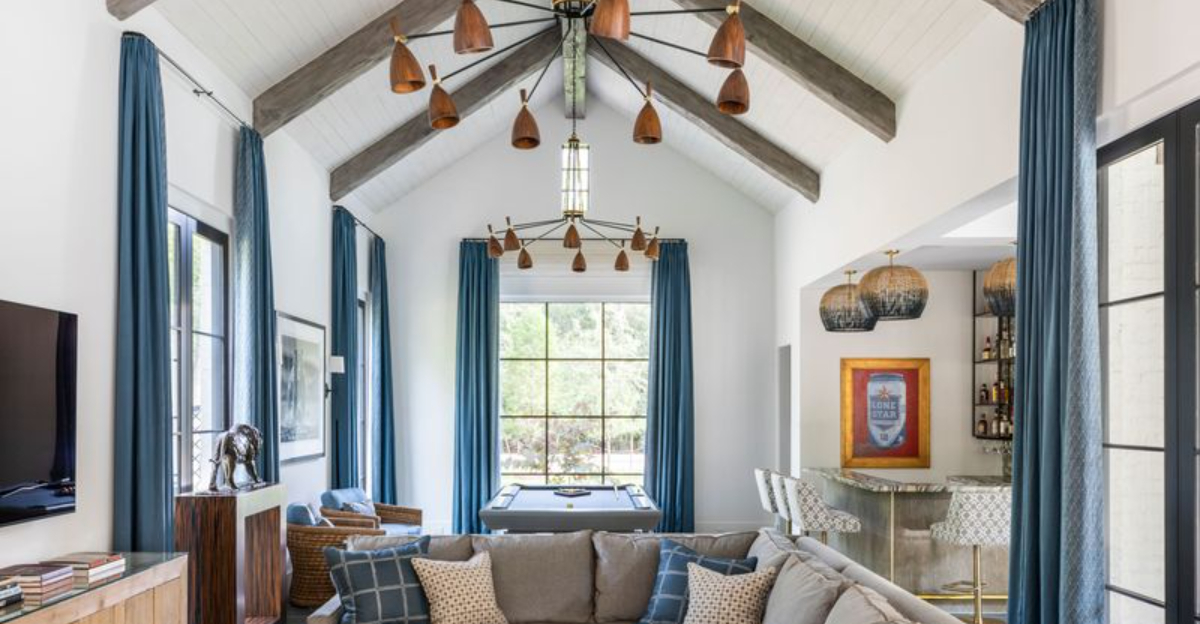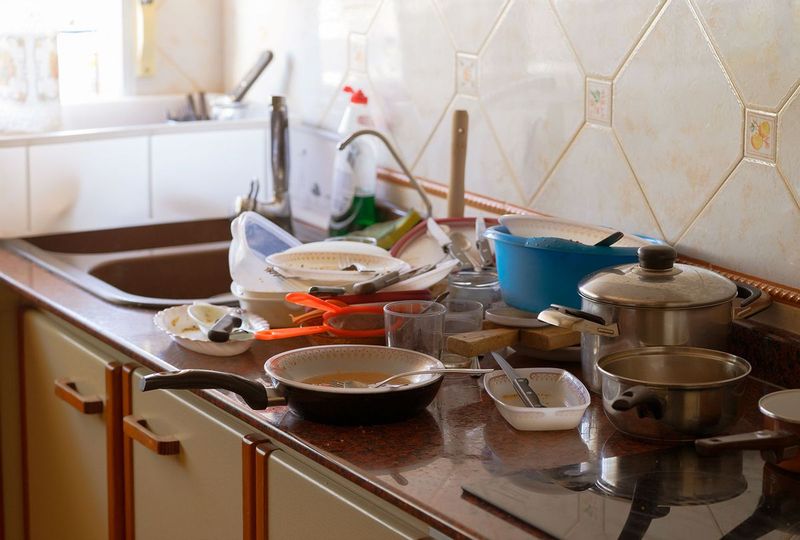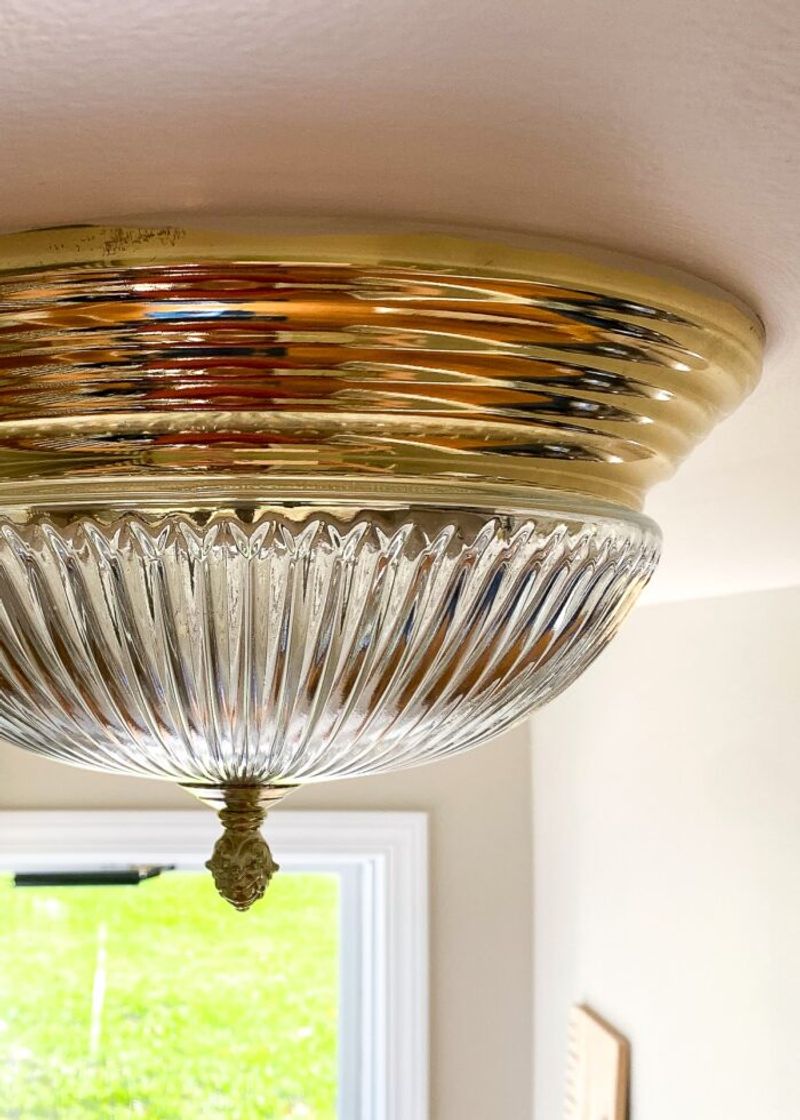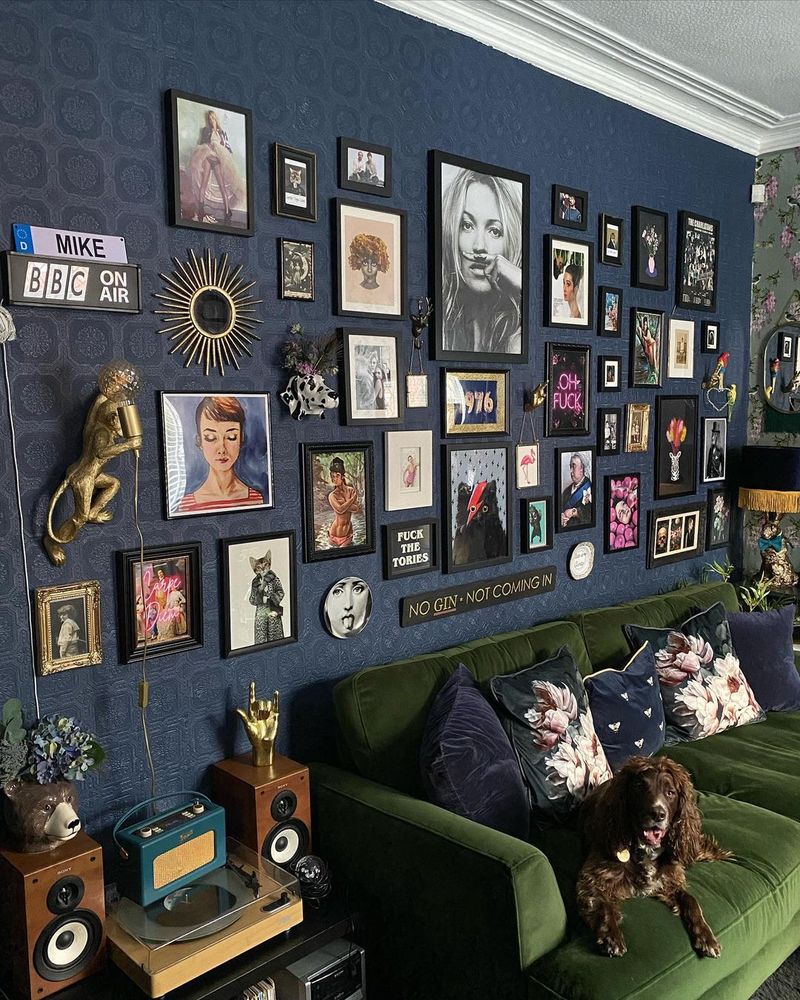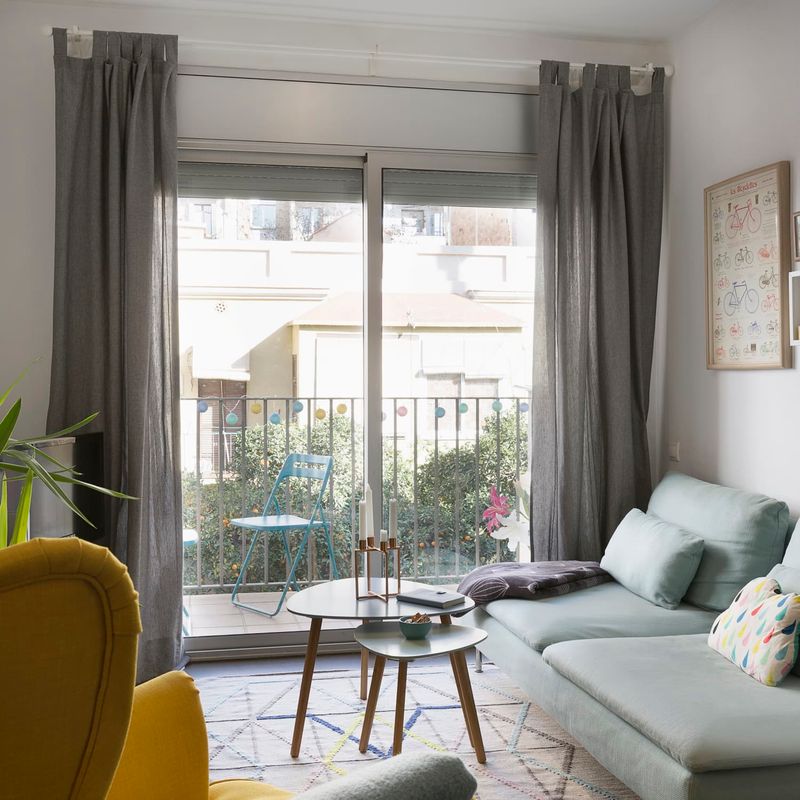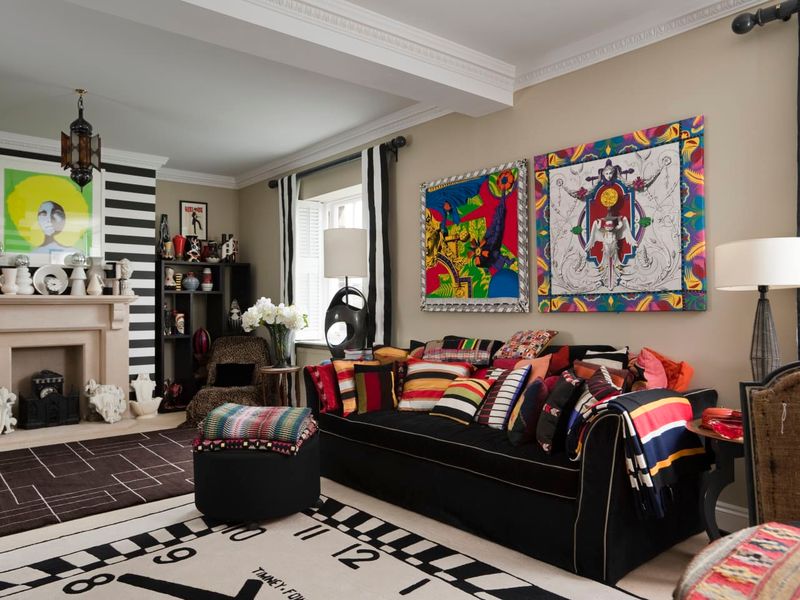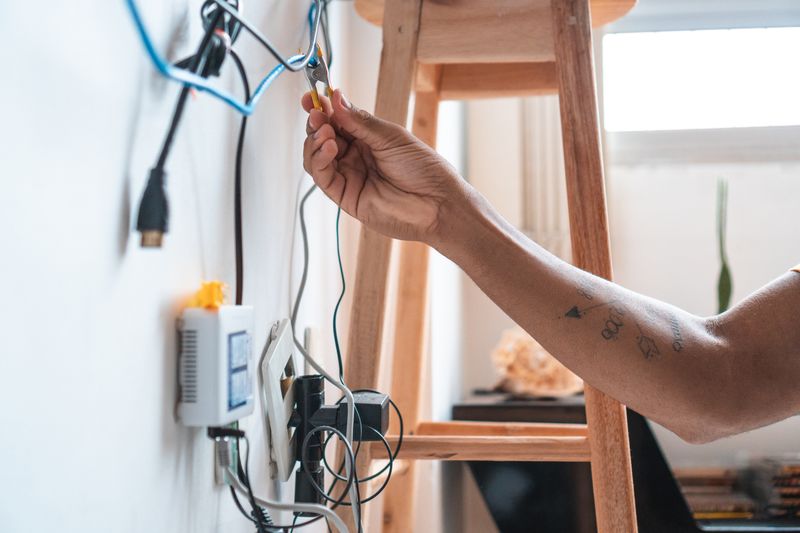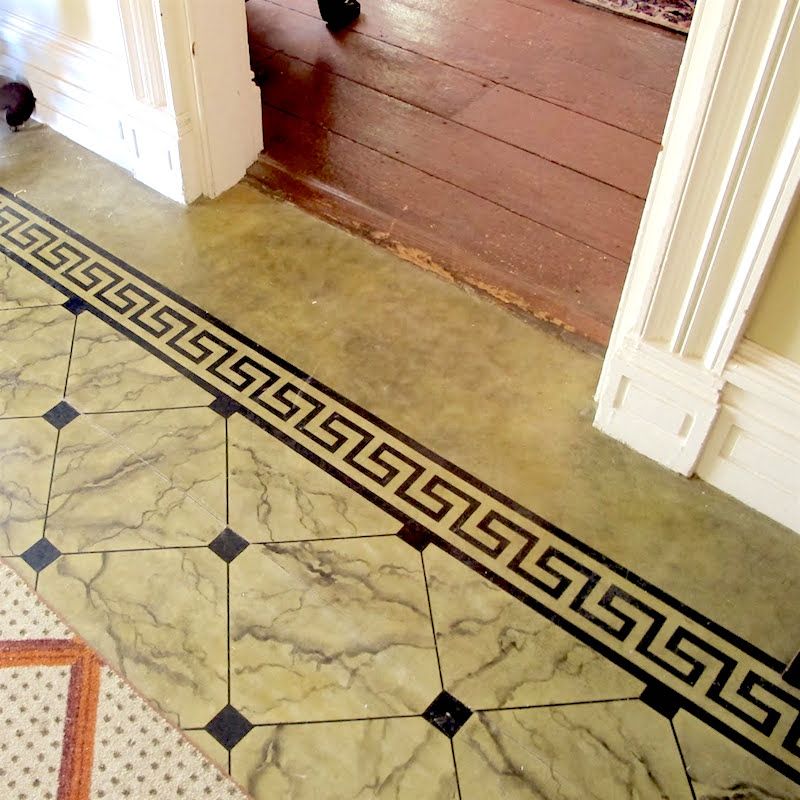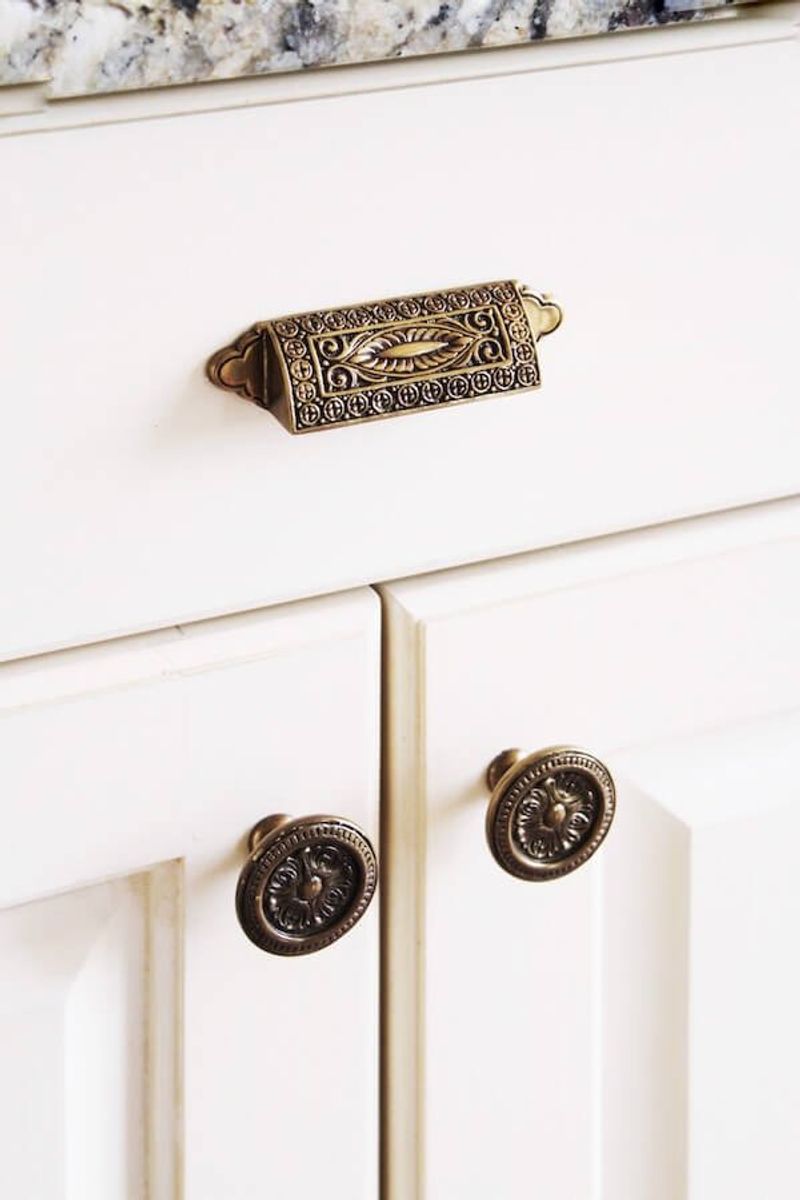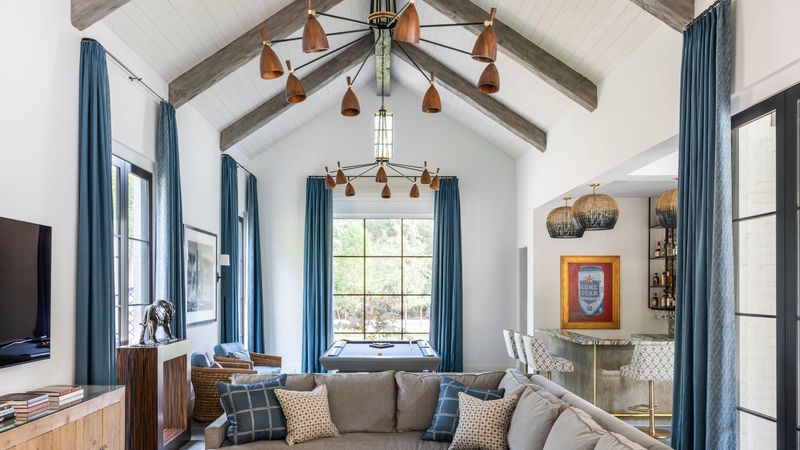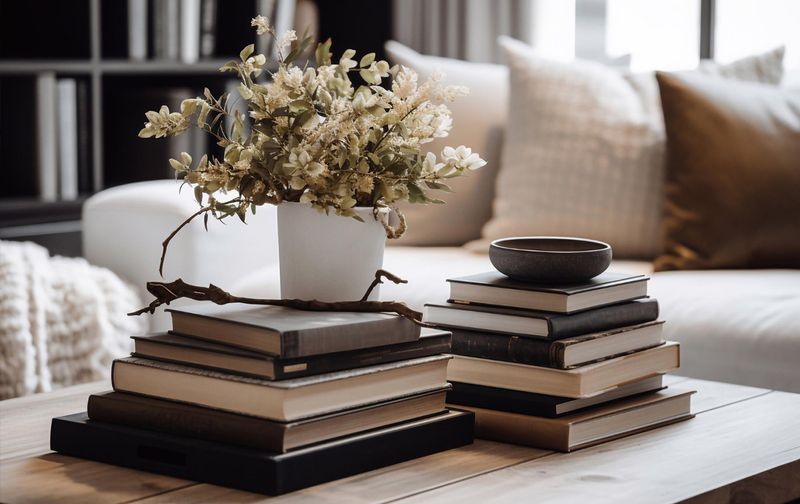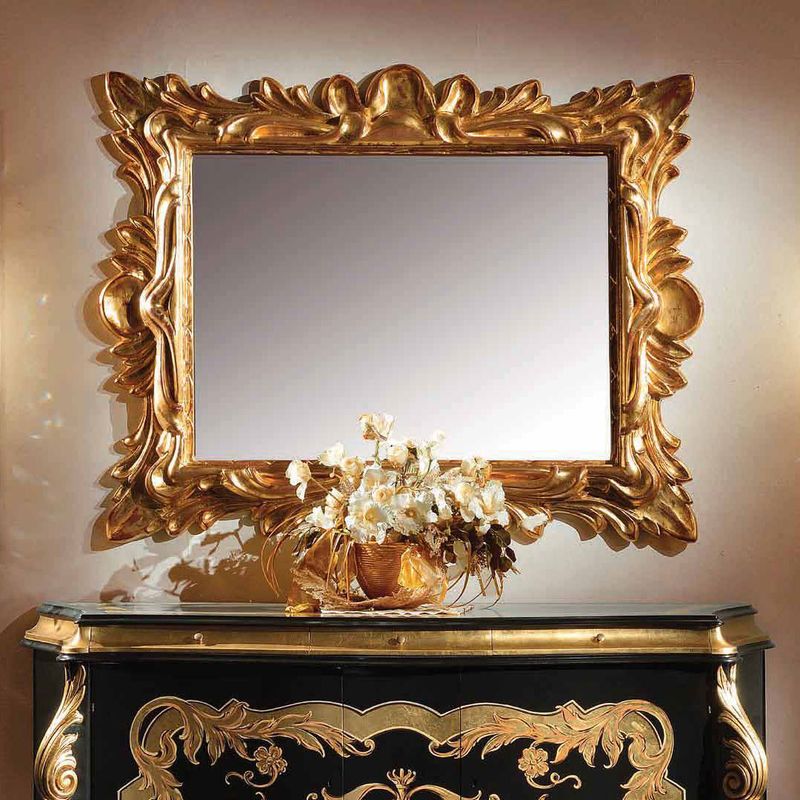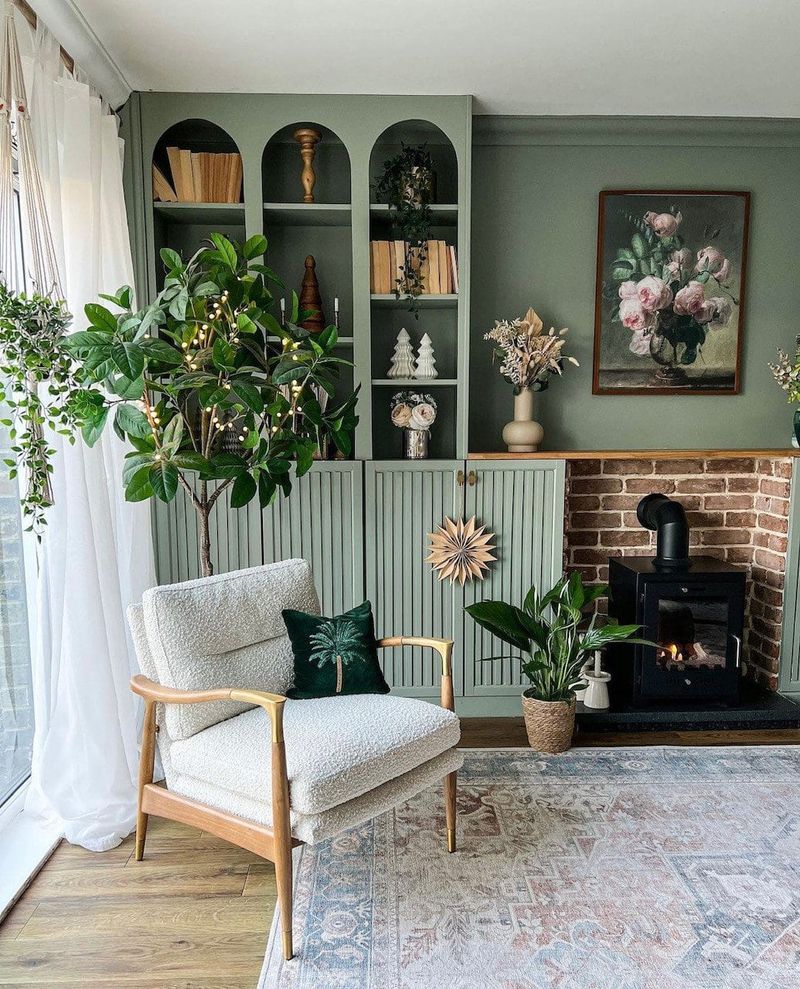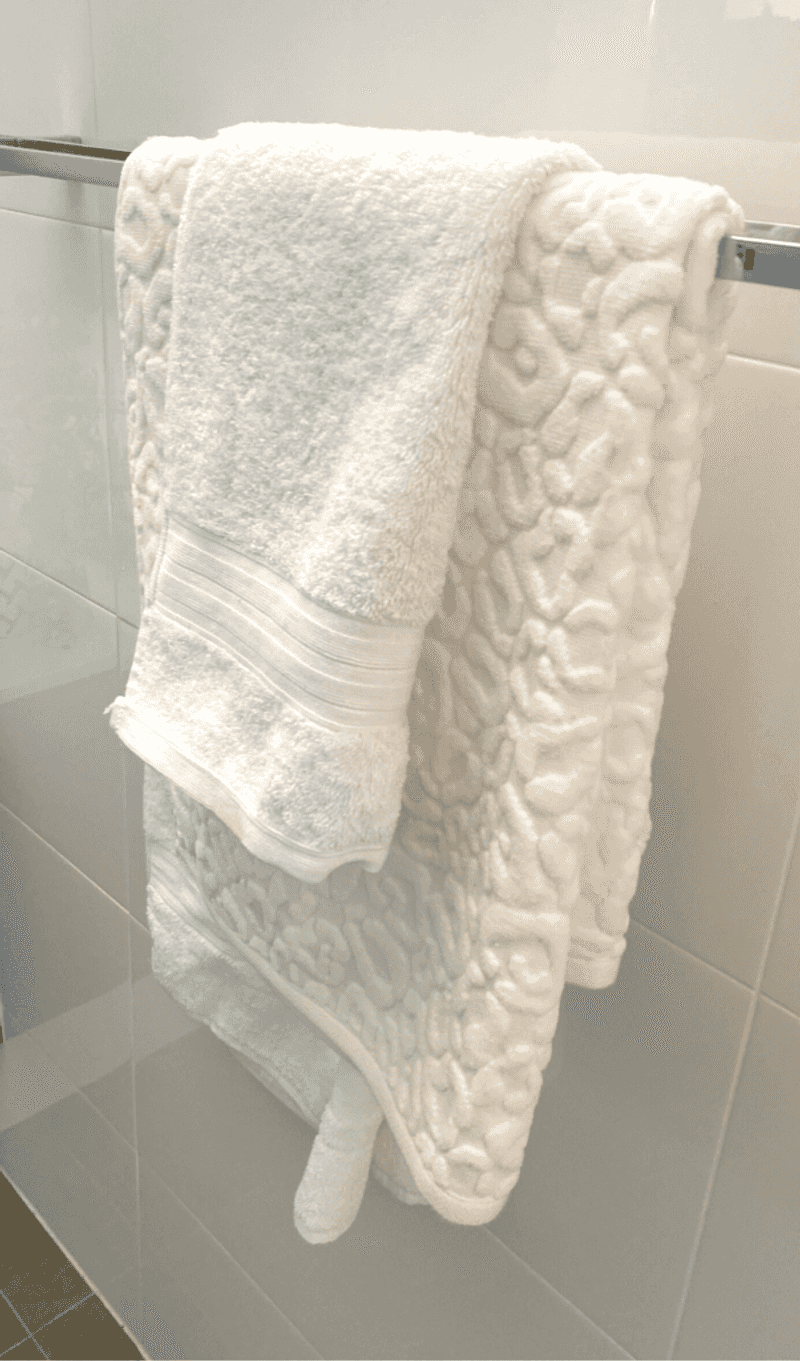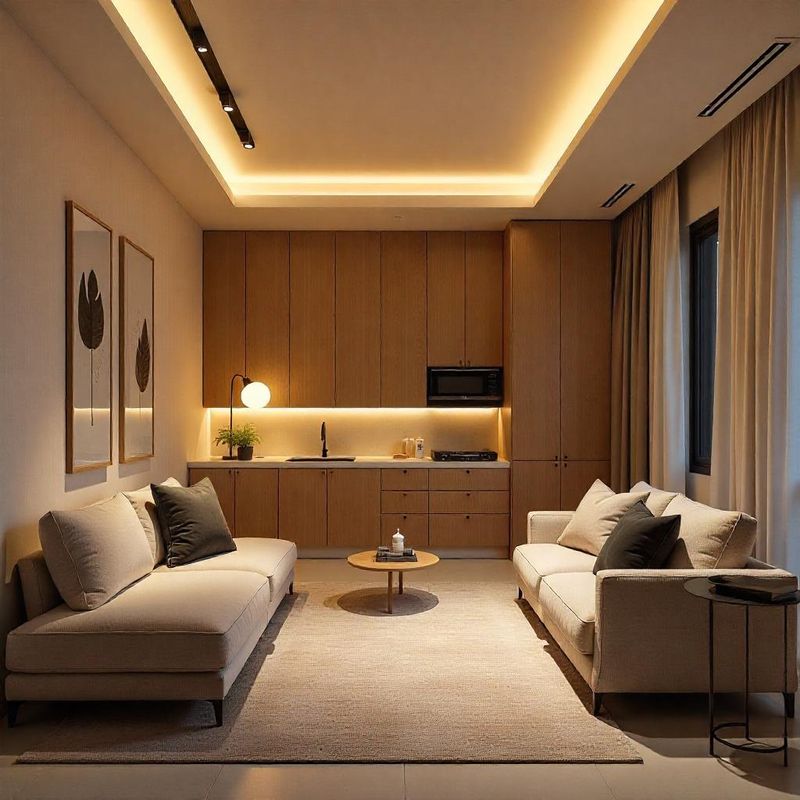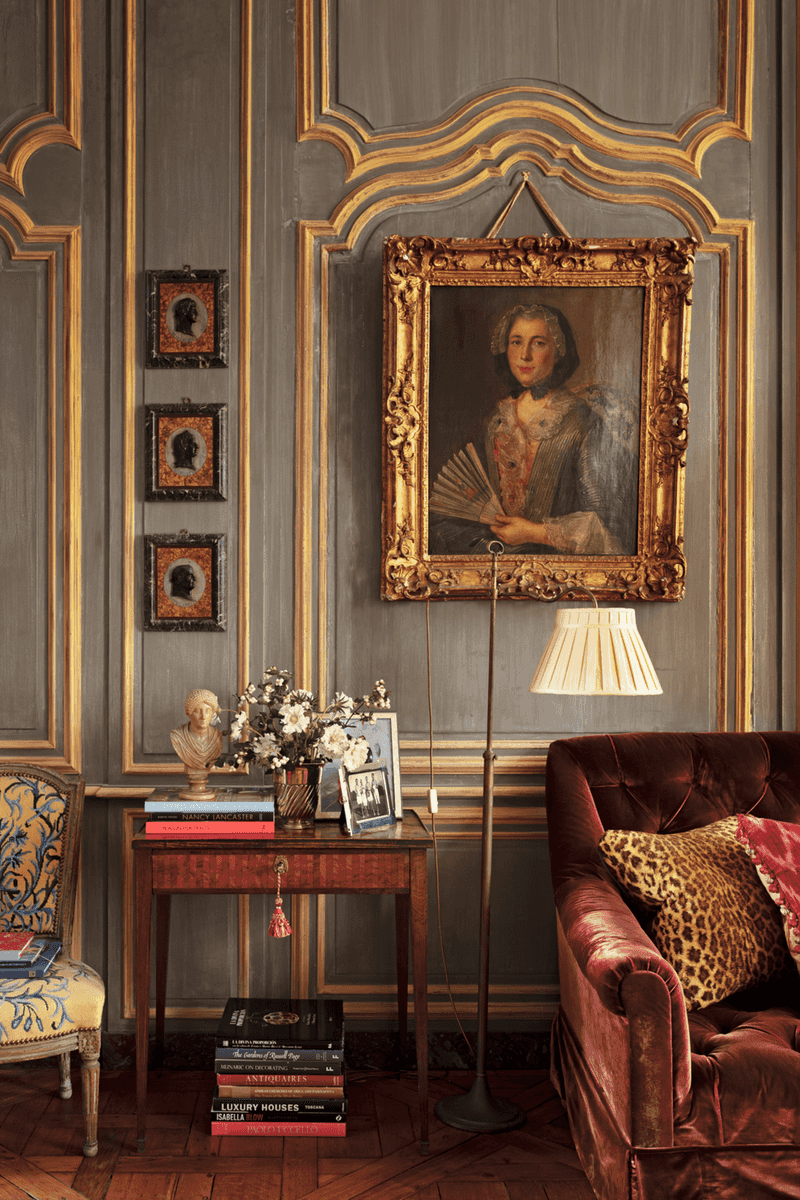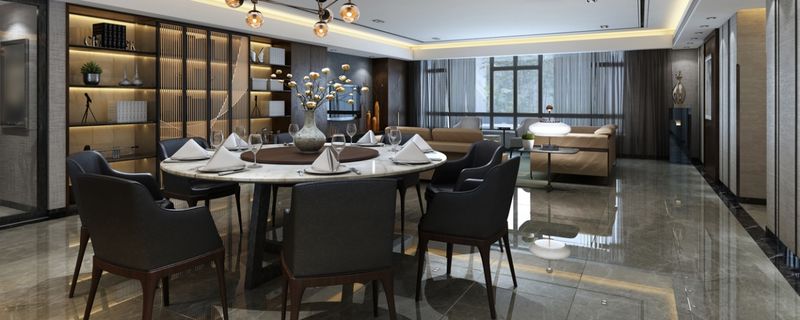Staging experts have a sixth sense for spotting the little things that can make or break a home’s first impression.
What might seem like a harmless decor choice to you could be silently dragging down the whole vibe. On the flip side, there are surprisingly simple tricks that instantly elevate a space and give it that high-end, polished look.
If you’re aiming to impress buyers – or just want your home to feel more luxurious – these are the do’s and don’ts worth paying attention to. Let’s break down the 8 mistakes that cheapen your space and 8 upgrades that add instant sophistication.
1. Cluttered Countertops and Surfaces
Ever walked into a kitchen where you couldn’t see the beautiful granite for all the appliances, mail piles, and random stuff? Cluttered surfaces immediately signal to buyers that there’s not enough storage – a major turnoff!
Professional stagers always recommend clearing at least 75% of your countertops. Keep only a stylish coffee maker or a small plant as an accent piece. The same goes for bathroom counters – ditch the army of half-empty products.
When buyers see clear, clean surfaces, they envision their own organized life in that space, not your chaotic morning routine.
2. Mismatched or Outdated Light Fixtures
Nothing screams “1990s bargain remodel” like that brassy chandelier hanging above your dining table. Surprisingly, lighting fixtures are one of the first things buyers notice, yet homeowners often overlook them when preparing to sell.
Mixing styles throughout your home creates visual confusion. That ultra-modern pendant light looks jarringly out of place when everything else is traditional. Even worse are those builder-grade flush mounts with yellowing glass covers.
3. Too Many Personal Photos and Memorabilia
While your collection of vacation snapshots and children’s artwork holds precious memories, potential buyers find it distracting and difficult to envision themselves in your space. Your wedding portrait over the fireplace? It’s basically announcing “This is MY home, not yours!”
Family photos create an emotional barrier between your house and potential buyers. They’re busy examining your trip to Disneyland instead of noticing the beautiful crown molding or spacious layout.
Store those cherished items safely away during showings. A few tasteful, impersonal art pieces will help buyers connect with the space without feeling like intruders.
4. Cheap Window Treatments
Those flimsy mini blinds that came with the house? They’re practically waving a red flag that says “budget constraints.” Likewise, plastic vertical blinds or those dreaded dusty fabric valances from the discount store instantly downgrade your home’s appearance.
Window treatments frame your views and anchor your rooms. When they look cheap, everything else does too. Many homeowners underestimate how much these details impact overall impressions.
5. Overcrowded or Oversized Furniture
Squeezing that sectional, two recliners, three side tables and a massive coffee table into your modest living room? You’re not maximizing seating – you’re making the space look tiny and cramped!
Furniture that’s too large for the room creates an optical illusion that shrinks your square footage. Similarly, too many small pieces create visual clutter that feels chaotic and unsophisticated.
Professional stagers often remove up to half a room’s furniture before showings. Buyers are purchasing space, not stuff, so showing them actual floor area and proper traffic flow makes your home feel more valuable and spacious.
6. Visible Electrical Cords and Cable Wires
Tangled nests of black cords snaking across your floors and walls instantly create a feeling of disorder and neglect. You might not even notice them anymore, but potential buyers certainly will!
Those exposed power strips and cable wires suggest the home lacks proper outlets or modern infrastructure. Even worse is the safety hazard impression they create – nobody wants to imagine their toddler tripping over your entertainment center’s cord jungle.
7. Mismatched or Worn-Out Flooring
Walking from plush carpet to laminate to tile to hardwood across your main floor? That choppy flooring transition screams “piecemeal renovation” to potential buyers. Even worse is flooring that’s clearly past its prime – those pet-stained carpets or scratched-up parquet aren’t fooling anyone.
If a complete flooring overhaul isn’t in your budget, focus on the most damaged areas and consider strategic area rugs to unify disparate sections while hiding the worst wear patterns.
8. Outdated or Mismatched Cabinet Hardware
Have you noticed those dingy brass knobs from 1992 still clinging to your kitchen cabinets? Small details like outdated or mismatched hardware can make even nice cabinets look tired and neglected.
Cabinet pulls and knobs are like jewelry for your kitchen and bathrooms.
Fortunately, this is one of the easiest and most affordable updates you can make. A matching set of modern hardware throughout your home creates consistency and suggests thoughtful maintenance – exactly what buyers want to see!
1. A Statement Ceiling That Wows
Forget about boring white ceilings! Professional stagers are turning heads upward with painted ceilings in rich navy blues, dramatic black, or even metallic gold. This unexpected focal point instantly elevates a room’s perceived value.
Adding architectural details like wooden beams, tin tiles, or a subtle pattern can transform your ceiling from forgotten space to conversation starter. The contrast between walls and ceiling creates depth that budget homes typically lack.
2. Oversized Art Books Displayed Just So
Coffee table books aren’t just for reading – they’re secret weapons in a stager’s arsenal! Large, hardcover art books featuring famous photographers, exotic destinations, or luxury brands signal sophistication and worldliness to potential buyers.
The trick is casual placement: a small, curated stack on a coffee table, one propped open to a gorgeous image on a kitchen counter, or several arranged on a bedroom bench. Stagers specifically choose books with elegant spines and covers that complement the room’s color scheme.
3. Strategically Placed Mirrors With Unusual Frames
Mirrors are magical multipliers of light and space, but not all mirrors are created equal! Top stagers select mirrors with unexpected frames – antique gold leafing, reclaimed driftwood, or hand-forged metal—that serve as art pieces themselves.
Placement matters tremendously. Positioning mirrors to reflect something beautiful (like a garden view or chandelier) rather than blank walls creates the illusion of additional rooms beyond. Larger mirrors installed floor-to-ceiling in narrow hallways or small rooms instantly expand the perceived square footage.
4. Live Plants That Aren’t Your Average Houseplants
Forget those predictable potted ferns! Luxury homes showcase statement plants that most people can’t identify at first glance. Think rare varieties like monstera deliciosa with dramatic split leaves, fiddle leaf figs towering in corners, or architectural snake plants in handcrafted ceramic vessels.
Stagers particularly love placing these botanical showstoppers in unexpected areas like bathrooms or laundry rooms.
5. Unexpectedly Plush Hand Towels in Powder Rooms
Would you believe something as simple as hand towels could make your home feel like a luxury hotel? Staging experts swear by this secret: ultra-plush, oversized hand towels in guest bathrooms signal thoughtful luxury that guests actually interact with.
Stagers typically fold them in the exact same manner as five-star hotels, creating visual consistency that registers subconsciously.
6. Unexpected Lighting From Unconventional Sources
Move over, standard lamps! Professional stagers are incorporating unexpected light sources that create magical ambiance – picture uplighting behind furniture, LED strips under kitchen cabinets, or vintage library lamps illuminating dark corners.
These sophisticated lighting layers make spaces feel intentionally designed. One surprising technique involves placing small, rechargeable art lights above ordinary framed pieces, instantly transforming modest prints into gallery-worthy displays.
7. A Single Vintage Piece With Mysterious History
Among perfectly coordinated modern furnishings, stagers deliberately include one conversation-starting vintage piece – perhaps a weathered leather trunk as a coffee table, an antique mirror with slightly clouded glass, or a restored farmhouse table in an otherwise contemporary kitchen.
These character pieces suggest the homeowners appreciate quality craftsmanship and have discerning taste that transcends trends. The patina of age creates visual interest while hinting at stories and history that new constructions typically lack.
8. Scent Layering That Creates Signature Atmosphere
Forget baking cookies before an open house! Professional stagers employ sophisticated scent layering techniques borrowed from luxury hotels and high-end retail spaces. This invisible element creates powerful emotional connections through carefully selected fragrances.
The approach combines complementary scents in different forms – perhaps a subtle diffuser in the entryway, high-quality linen spray on bedding, and natural elements like eucalyptus branches in bathrooms. Unlike overwhelming single-note air fresheners, these layered scents create depth and dimension.

